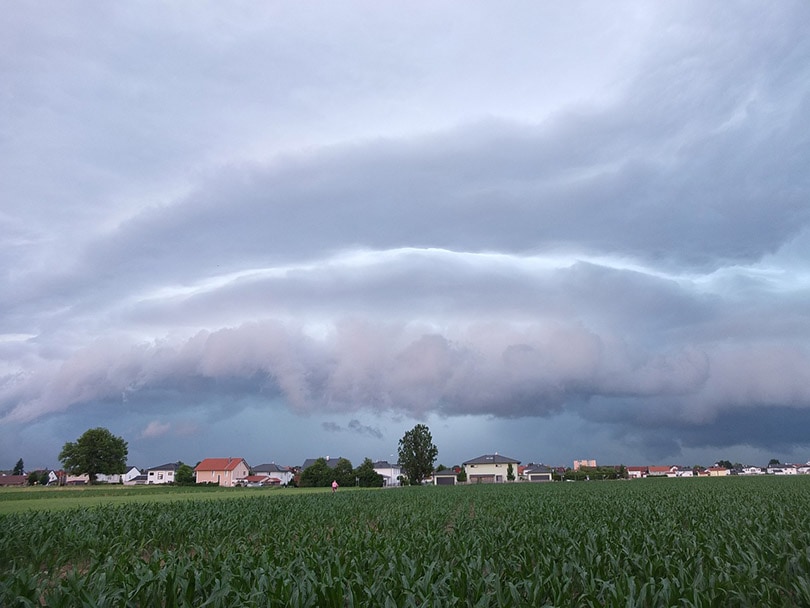What Is a Hurricane Local Statement? What You Need to Know
-
Codee Chessher
- Last updated:

There are a dizzying array of warnings, watches, and other miscellaneous advisories issued for hurricanes. It’s not realistic to expect the average person to know the difference, but they each serve distinct and vital functions as hurricanes approach. Below, we’ll be detailing what a hurricane local statement is, as well as other essential advisories.

Hurricane Local Statements
A hurricane local statement, or HLS, is a statement issued by the U.S National Weather Service to areas forecast to be affected by a hurricane and those currently affected.
An HLS consists of two main portions: one with raw meteorological data generated by computers and a hand-tailored portion.
This latter portion has descriptions of affected areas, official evacuation recommendations by local officials (if any have been made), current storm watches and warnings, expected timing, current or anticipated impacts, as well as other relevant information and precautions about the storm.
If that paragraph was too esoteric for you, let’s break it down. The first part of an HLS is raw data about the storm, and the second is all the important information the media, local governments, and people in an affected area need to know. You may have seen them; they’re long statements written in capital letters, sometimes found on official weather and government sites.
Since 1999, HLSs have graphs with a storm’s anticipated path as well as wind and storm surge levels. In hurricane-prone areas, these graphs are frequently displayed on TV news broadcasts as hurricanes approach.
The advantage of the graphs is that they pack all the most important info about a hurricane into one picture that’s easy for the average person to read and understand; indeed, they’ve proven so handy that they’ve stayed in use.
Many parts of HLSs are written based on prewritten templates from the 1990s based on the anticipated impacts associated with past storms, depending mainly on their category level from 1 to 5. This makes writing and issuing an HLS much faster than if they were all written from scratch each time.
Criticism on Hurricane Local Statement
The main disadvantage of hurricane local statements is that they’re hard to read. Following Hurricane Andrew in 1992 and Hurricane Irma in 1992, local governments and media criticized the statements as too long, redundant, and broad in scope.
Because computer problems regularly delayed the automated portions of HLSs, the National Weather Service split the statements into manmade and computer-generated halves. This helped issue them faster, plus made them easier to read.
Hurricane Watch vs. Warning: What’s the Difference?
The other major hurricane advisories are hurricane watches and hurricane warnings. Despite their similar names, they serve distinct functions. Let’s check out the difference between the two.
Hurricane Watch
A hurricane watch is an advisory issued when a hurricane might affect an area within 48 hours. Typically, a hurricane watch also details possible impact conditions like high winds, intense rainfall, and possible flooding or storm surges in low-lying or coastal areas.
A hurricane watch should be taken as an official reminder to update emergency kits with important items like essential documents, food, toilet paper, and batteries. People should also check evacuation routes and confirm local storm shelter locations if they don’t intend to shelter at home.
Hurricane watches don’t call for immediate action but rather continued vigilance and preparedness as a storm appears on track to affect the area. Because hurricanes are unpredictable, it’s still possible the storm could swerve and miss the area entirely.

Hurricane Warning
Hurricane warnings come after hurricane watches and are direct warnings that an area will be affected by a hurricane within 36 hours. The most common conditions expected are winds in excess of 74mph, heavy rainfall, storm surges, river flooding, and flooding of inland or low-lying regions. Power outages are common and can last more than seven days.
Hurricane warnings mean people should immediately take action to protect their lives and property. Residents sheltering at home should finalize emergency kits, board up windows, and prepare to ride out the storm. According to local advisories, residents who need to evacuate should gather family, pets, and essential items and be prepared to evacuate.
Hurricane warnings sometimes persist after the storm has passed, most commonly if there is still heavy flooding or abnormally high waves in an area.
Conclusion: Hurricane Local Statement
Hurricane local statements are long and detailed statements with relevant information about forecasted hurricanes that might affect the area. Hurricane watches and warnings are more direct methods that people should act.
- National Oceanic and Atmospheric Administration
- National Oceanic and Atmospheric Administration
- National Weather Service
- 21st International Conference on Interactive Information Processing Systems (IIPS) for Meteorology, Oceanography, and Hydrology
- National Weather Service
- Federal Emergency Management Administration
- National Weather Services
Featured Image Credit: MurrrPhoto, Pixabay
Contents
